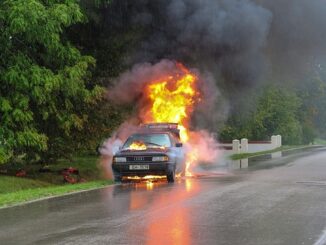
The aftermath of a car accident can be a confusing and stressful time. Adrenaline pumping, tempers flaring, and potential injuries can cloud your judgment. However, taking the right steps at the scene can significantly impact everything from getting the medical attention you need to ensuring a smooth insurance claim process. This guide will equip you with the knowledge to navigate this challenging situation effectively, focusing specifically on what to do at the scene of an accident in Ontario.
1. Ensure Safety is Paramount
The first and most crucial step is to ensure the safety of yourself and everyone involved in the accident.
- Stop your car immediately. Leaving the scene of an accident is a criminal offence, even if the damage seems minor.
- Turn on your hazard lights and activate your parking brake. This will alert other drivers to the situation and prevent further collisions.
- If possible, move your vehicle off the road. If your car is inoperable, turn on your hazard lights and wait for assistance on the shoulder.
- Assess the situation for injuries. Check on yourself and the occupants of the other vehicle(s) involved. If anyone is injured, call 911 immediately.
2. Securing the Scene
Once the immediate danger has passed, take steps to secure the scene:
- Flares or reflectors (if available): If visibility is poor or it’s nighttime, use flares or reflectors to warn oncoming traffic of the accident.
- Gather Information: Exchange information with the other driver(s) involved, including:
- Full name and contact details (phone number and email)
- Driver’s license number
- Insurance company name and policy number
- Make, model, and license plate number of all vehicles involved
3. Documenting the Scene
Detailed documentation can be invaluable when filing an insurance claim or in potential legal disputes.
- Take pictures: Use your phone camera to capture photos of the scene from various angles. Include damage to all vehicles involved, skid marks, debris, traffic signals, and any injuries (with the injured person’s consent).
- Video recording (optional): If possible, take a video recording of the scene, narrating the key details like the location, time of day, and visible damage.
- Witness information: If there were witnesses to the accident, get their names and contact information.
4. Reporting the Accident
The next step depends on the severity of the accident:
- For accidents with injuries or major damage (over $2,000): Call 911 immediately. The police will file a collision report, which is crucial for insurance claims.
- For minor accidents with no injuries and minimal damage (under $2,000): You may not need to call the police. Some areas in Ontario have Collision Reporting Centres (CRCs) where you can report the accident in person within 24 hours.
5. Avoid Making Statements of Fault
Do not admit fault at the scene of the accident, even if you feel you may be partially responsible. Stick to the facts and avoid discussing the cause of the accident with anyone except the police.
6. Contact Your Insurance Company
As soon as possible after the accident, contact your insurance company to report the accident. They will guide you through the claims process and advise you on next steps.
7. Seek Medical Attention
Even if you don’t feel any pain immediately, it’s crucial to seek medical attention after an accident. Some injuries, like whiplash, may not manifest right away. Getting a medical evaluation will establish a record of your injuries and ensure you receive proper treatment.
Remember:
- Do not move your vehicle if it’s blocking traffic or you suspect a major mechanical issue.
- Do not discuss the accident with anyone other than the police, your insurance company, and your lawyer (if you choose to involve one).
- Keep all documents related to the accident, including police reports, medical bills, and repair estimates.
Following these steps will help you navigate the aftermath of a car accident in Ontario more effectively. Remember, safety is always the top priority. By staying calm, taking the necessary steps, and seeking assistance when needed, you can ensure a smoother claims process and prioritize your health and well-being.



